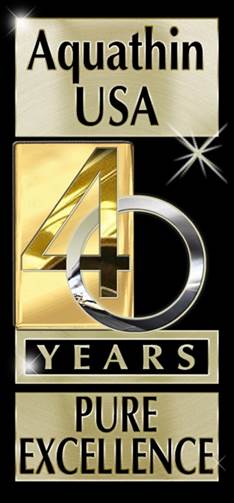REVERSE OSMOSIS
REVERSE OSMOSIS
Osmosis is a natural phenomenon whereby a low concentration of salts is drawn to a high concentration of salts passing through a semi permeable membrane. This occurs in all forms of living nature, animal and plant. Reverse osmosis is then a reduction of a high concentration of salts to a low concentration of salts passing through a semi permeable membrane. Whereas osmosis takes place naturally utilizing what is known as the "osmotic pump (salts attraction to salts)" reverse osmosis requires an external pressure to break the laws of nature (the osmotic pump) and force the fluid through the membrane. Basically only the H2O molecule can pass the .0001 micron or less pore structure of the membrane (NOTE other contaminates can partially pass i.e monovalent salts, VOCs, nitrates. These are further eliminated by GAC pretreatment, higher source pressure, deionization). Consequently, the source side of the membrane constently has a higher concentration of salts. This would be similar to boiling all the water from a tea kettle and observing the dust residue remaining. Another example here is lets say the water in the tea kettle was 500 ppm TDS. By boiling half away (similar to removing half the water through a membrane) the TDS equates to 1000 ppm. As the concentration would increase further it approaches a saturation index and consequently no further salts would remain in solution...they precipitate and fall out of solution forming a crystalline plaque that blinds the pores of the membranes. In order to avoid this, the RO mechanics allows for a chronic bleed off of the high concentration of salts preventing them from reaching saturation and plaquing. Normally residential systems operate around 3 or 4 to 1 gallon brine to product ratio. Commercial systems operate normally 2 to 1 (this discussion is for tap water applications where TDS is less than 2000 ppm. Ratios increase for brackish and tap water). Said conversely, if your client were to restrict the brine flow, the membranes would foul out.
CTA vs TFC
Regarding the KT90-1 (or an Aquathin RO model ending -1); this unit contains our CTA membrane (92%-94% rejection at 14gpd), tolerates a pH of 5.5 to 8.5 and is slightly bacterial resistant, hence installation is meant for chlorinated water supplies. We prefer to send the KT90-2 with a small Carb12 prefilter. This unit contains our TFC membrane (as well as any RO model ending -2...97+% rejection at 24gpd), tolerates a wider range of 2-11 and is totally bacterial resistant. The carbon prefilter permits installation on chlorinated or unchlorinated water supplies. Both models are our patented RODI process. You may choose either model. Also, you will be interested to know that you can install your Aquathin RODI systems on water with hardness up to 25 grains without softening pretreatment. Other companies limit their RO units to 10grains. We get this accomplished with our manual or patented auto flushing to purge potentially plaquing debris.
For More Information About Aquathin, click
https://www.facebook.com/aquathin/
https://www.linkedin.com/in/alfielipshultz/


